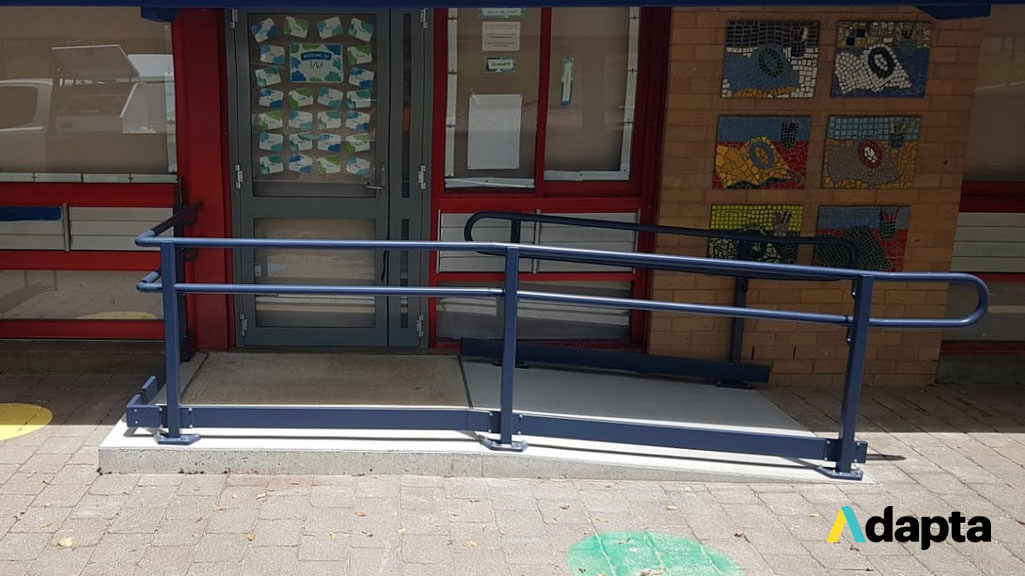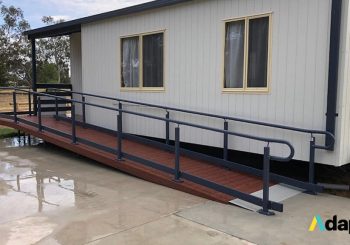The benefits of having wheelchair ramps aren’t limited to homes and care facilities, such as hospitals and clinics. These structures also provide a number of advantages to owners of public properties and those who manage businesses.
Accessibility ramps primarily allow individuals with disabilities to visit places they need to go to in an easy and safe manner. These places are usually establishments that sell products or offer services that cater to everyone. Having ramps in these areas enables people with disabilities to easily acquire what they need.
If you have a business establishment or own a property that’s open to the public, then you should consider making it accessible to everyone by installing a wheelchair ramp. In this article, we’ll go through the various benefits of having accessibility ramps in public spaces.
Helps People With Mobility Issues
The main purpose of wheelchair ramps is to assist individuals with disabilities. It helps those in wheelchairs, walking canes, and electric scooters access certain places. For public spaces such as libraries, government offices, parks, and commercial establishments, having accessibility ramps sends the message that anyone can visit these areas and benefit from their service.
Inclusivity is an important factor for public spaces especially due to the number of people with disabilities in Australia. According to the Australian Institute of Health and Welfare, around 18% of the country’s population, which is equivalent to about 4.4 million people, has some form of disability. Based on this figure, it clearly shows that making your establishment or public property wheelchair-friendly can help a lot of people.
Follows Local Laws And Regulations
In addition to providing inclusivity, having accessibility ramps in public areas is also required by the law. As stated in the Disability Discrimination Act, these places should be accessible to individuals with disabilities. Some of these areas include walkways, educational facilities, banks, parks, theatres, sporting venues, government offices, social clubs, public transportation facilities, and commercial establishments.
Under the DDA, these areas are required to have facilities that can be accessed and used by everyone, such as easy to reach elevator buttons, wheelchair-accessible toilets, and audible and tactile lift signals. Aside from these, the entry points and doorways should have regulation-compliant ramps. If you manage a shop or a business, installing a ramp that follows the specifications set by the DDA and the Australian Standards will help you avoid legal problems in the future.
Improves Business Performance
Having an accessibility ramp can also benefit your business as it allows your establishment to cater to more customers. As mentioned earlier, almost 20% of the population in Australia, or roughly 1 out of 6 people, have a disability. Through a ramp and by making your store or office wheelchair-friendly, you’ll be able to provide your products and services to more people.
Aside from this, installing a wheelchair ramp outside your place of business sends the message that you are an inclusive company. It can help improve your business’ social standing, which can then elicit a positive response from the members of the community.
Helps Other People
In addition to people with disabilities, other individuals can also take advantage of wheelchair ramps. For instance, these structures can also be used by parents with kids in baby strollers. Also, people who are accompanied by their guide dogs and other service animals can benefit from using accessibility ramps.
Delivery personnel hauling large packages can also use the ramps in your place of business. This is very helpful, especially if supplies and other items are regularly delivered to your establishment.
Reduces Liability Issues
During the winter and rainy seasons, the surfaces of stairs and steps tend to get slippery. Oftentimes, accidents and falls caused by slippery surfaces in a public facility or commercial establishment can lead to legal problems for the business owner. Having a ramp with certain safety features, such as handrails and a non-slip surface, can help avoid liability issues. More importantly, it can prevent people from encountering accidents.
Also, as explained earlier, the DDA requires public areas to be accessible to everyone. This means that if you manage an establishment that’s open to the public, then it should have a DDA-compliant ramp. Following this regulation will help you avoid unnecessary problems in the future.
Enhances The Appearance Of Establishments
A wheelchair ramp can also enhance the appearance of various places due to its design. Nowadays, ramps can be made out of a variety of materials. Many of them feature surfaces that are constructed out of aluminium, hardwood, and even concrete. These ramps can also be designed to complement the theme and overall look of an existing structure.
The aesthetic effect of well-designed accessibility ramps can also help boost the resale value of properties since they are already compliant with local laws and regulations.



